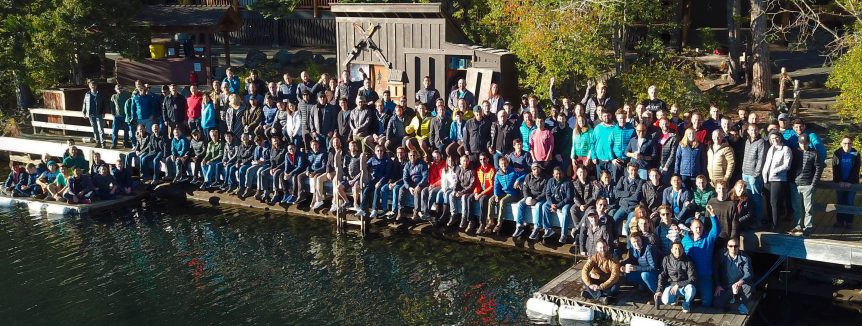In a new partnership agreement, Uber Elevate recently added Joby Aviation to its stable of aircraft companies which are to supply craft for its Urban Air Mobility program. Joby builds electric motors, 12 of which line the wing of NASA’s X-57 Maxwell, with two larger motors for forward thrust when the small units are shut down.
This inventory of electric motors on the NASA project gives Joby a certain entrée to interest from the Urban Air Mobility movement, and it’s received that interest from Uber. Well financed in its own right, Joby has committed to meeting Uber’s desire to have operating sky taxis in the air by 2023, as reported by Andrew J. Hawkins in The Verge.
We have written about Joby several times in the past, including this 2014 report that includes an early rendition of the Maxwell project.
Much has happened for Joby since then. Hawkins picked up the story in 2018. “Joby is the brainchild of inventor JoeBen Bevirt, who started the company in 2009. The company operated in relative obscurity until 2018, when Joby announced it had raised a surprising $100 million from a variety of investors, including the venture capital arms of Intel, Toyota, and JetBlue. The money helped finance development of the company’s air taxi prototype, which has been conducting test flights at Joby’s private airfield in Northern California.”
Hawkins quoted from a Bloomberg report about two reporters allowed to see an otherwise secret test flight on Woodpecker Ridge, high above nearby Santa Cruz.
“The pilot managed a vertical takeoff, 15 minutes of flight in a 15-mile loop, and a safe landing. Powered by electric motors and sophisticated control software, the taxi performs like a cross between a drone and a small plane, able to zip straight up on takeoff and then fly at twice the speed of a helicopter while making about as much noise as a swarm of superbees. Bevirt says thousands of these sky cabs will one day shuttle people around cities, soaring above the conventional traffic below.” This surprising report didn’t seem to elicit a great deal of curiosity from the press, but recent news suggests it enticed other investors into looking more closely. A video at that time suggested what a two-seat, Joby sky taxi might enable.
Joby has since become the seventh partner of Uber for their Elevate program. Hawkins, in a December article, explained, “Unlike the dozens of other companies that are currently building electric vertical take-off and landing (eVTOL) aircraft, Joby has kept much of its project under wraps. The few renderings that are out there show a plane-drone hybrid with 12 rotors and room in the cabin for four passengers, though a spokesperson previously cautioned that what Joby is working on now is ‘entirely new.’”
A multi-year contract between Uber and Joby promises “urban air taxi service in select markets.” Joby will supply and operate its craft, and “Uber will provide air traffic control help, landing pad construction, connections to ground transportation, and, of course, its ride-share network reconfigured to allow customers to hail flying cars rather than regular, terrestrial ones.”
One wonders how Uber’s air traffic control help will interface with plans from NASA and the FAA. And other sky taxi firms, for that matter. Joby will join Uber’s other partners in providing aircraft for the project – all with significantly different configurations. The others include Jaunt, Embraer, Pipistrel, Karem Aircraft, Aurora Flight Sciences, and Bell.
Hawkins reports, “Bevirt, Joby Aviation’s CEO, said he believes air taxis will enable people to get to their destinations ‘five-times faster than driving, reduce urban congestion and accelerate the shift to sustainable modes of transit.’ In a statement, he said he was excited to join forces with Uber. Eric Allison, head of Elevate, praised Joby as ‘a real technology leader whose vehicles aim to be designed to enable a safe, quiet, and affordable service for Uber Air riders.’”
Joby’s Growth
The image at the top of this entry shows Joby’s work force today. Six years ago, when your editor was privileged to visit the Joby site, there were about a dozen engineers working on the then current project. The larger group today will grow, with Joby offering 142 openings in a wide range of engineering and technical area. Uber Elevate has 12 openings, mostly in the bay area, but with one lucky research scientist in machine learning getting a spot in Paris. Analysts have said the Sky Taxi business could lead to a $318 billion enterprise from 2020 t0 2040. Joby and Uber alone could account for a big part of that bright future.


